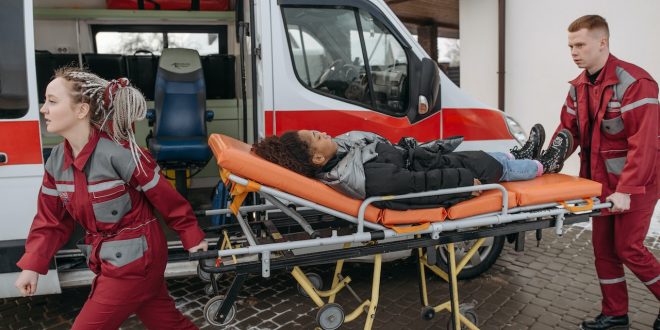Most people know that there are certain situations that warrant the need to get help as soon as possible. However, some cases might not be clear as others. It’s important for us to understand the difference, so we can make good, fast decisions. Our knowledge can make a big difference in emergency situations and even save time for medical staff who might need to prioritize their efforts elsewhere. That said, here are six signs that you might need emergency medical services, whether for yourself or someone else.
Chest Pains/Discomfort
Though chest pain or discomfort is often innocuous and caused by heartburn or indigestion, it can point to more serious things. It’s pretty normal to experience heartburn or indigestion regularly, especially if you have a sensitive digestive system. However, a different type of chest pain that doesn’t feel like heartburn or lasts for longer than usual might mean something else is going on. The following symptoms are ones to pay attention to:
- A feeling of pressure, heaviness, or tightness in the chest
- Accompanying pain in other parts of the body like the neck, arms, or back
- Feeling lightheaded or dizzy
- Shortness of breath
- Feeling sick or nauseous
Unexplained Personality or Behavioral Changes
An abrupt, unexplained personality or behavioral change might be nothing but can also be a sign of a dangerous medical situation. For example, sepsis and other conditions causing a high fever can cause a significant change in mood, behavior, and cognitive ability. In some cases, it might be a medical emergency that requires fast attention.
Heavy Bleeding That Doesn’t Stop
For this one, consider the age and health of the person bleeding. Are they prone to bleeding perhaps from medication or a condition? Heavy bleeding is also considered more serious for children. In this case, a trip to the ER or even an ambulance might be better than just pediatric urgent care. Of course, if the bleeding can be stopped or has slowed down, this might not be necessary. However, any amount of bleeding is a reason to pay attention.
There is a way that paramedics evaluate trauma patients in the field. It’s called the Shock Index and is concluded by a simple division problem. They simply divide the heart rate by the systolic blood pressure (larger number). You might consider the importance of shock index during bleeding emergencies and figure it out before you get help. It could assist you in knowing how serious your bleeding emergency is.
Signs Of a Stroke
 Someone potentially having a stroke is one of the more terrifying medical situations to observe, especially when you’re not sure what is happening at that moment. Though it can vary from case to case, there are some clear signs of a stroke including:
Someone potentially having a stroke is one of the more terrifying medical situations to observe, especially when you’re not sure what is happening at that moment. Though it can vary from case to case, there are some clear signs of a stroke including:
- Sudden weakness or numbness on one side of the face, arm, or leg
- Loss of vision
- Loss of sensation or coordination
- Slurred speech or struggling to understand speech
- Sudden loss of balance
- Severe headache
- inability to speak normally
- Drooping on one side of the face
If any of this is happening, get to the ER or call emergency services as quickly as you can. Do also note the time the symptoms started.
Difficulty Breathing
Any instance a person is struggling to breathe is potentially life-threatening. It’s important to call for help first so someone can talk you through steps to immediately help until an ambulance arrives. Remember, there are multiple reasons that someone might lose the ability to breathe effectively, including asthma, pneumonia, allergic reaction, anaphylactic shock, smoke inhalation, or a medical condition. Treating it as a medical emergency is the best thing you can do in this situation.
These signs are just the tip of the iceberg when it comes to reasons for calling emergency services. The more knowledgeable you can be, the better you’ll be should you ever find yourself in a situation like any of the above.
**** This post is strictly informational and is not meant to replace the advice of your healthcare provider. Women’s lifelink, its owners, administrators, contributors, affiliates, vendors, authors, and editors do not claim that this information will diagnose, treat, or improve any condition or disease.
 Women's Life Link Be Well, Be Happy, Be YOU!
Women's Life Link Be Well, Be Happy, Be YOU!





